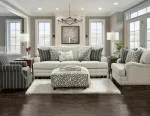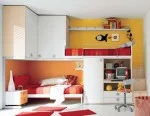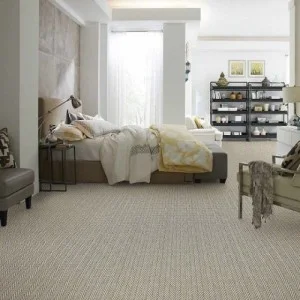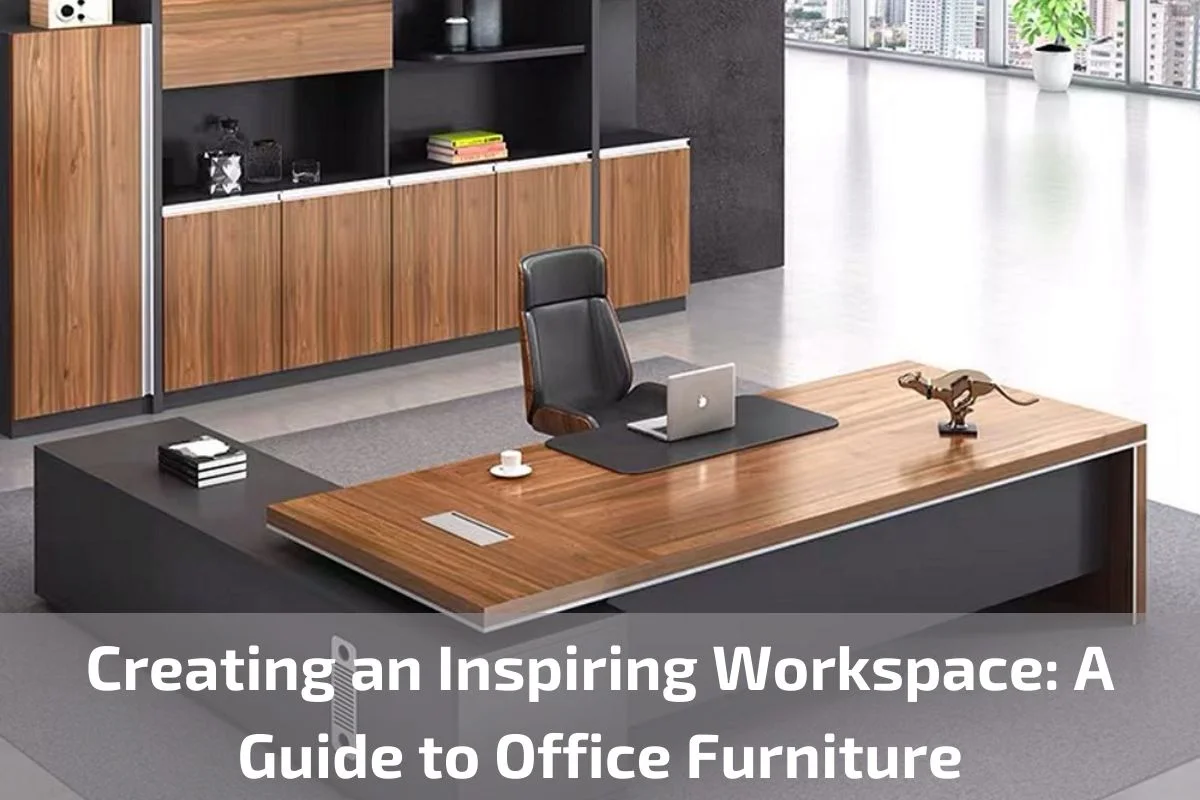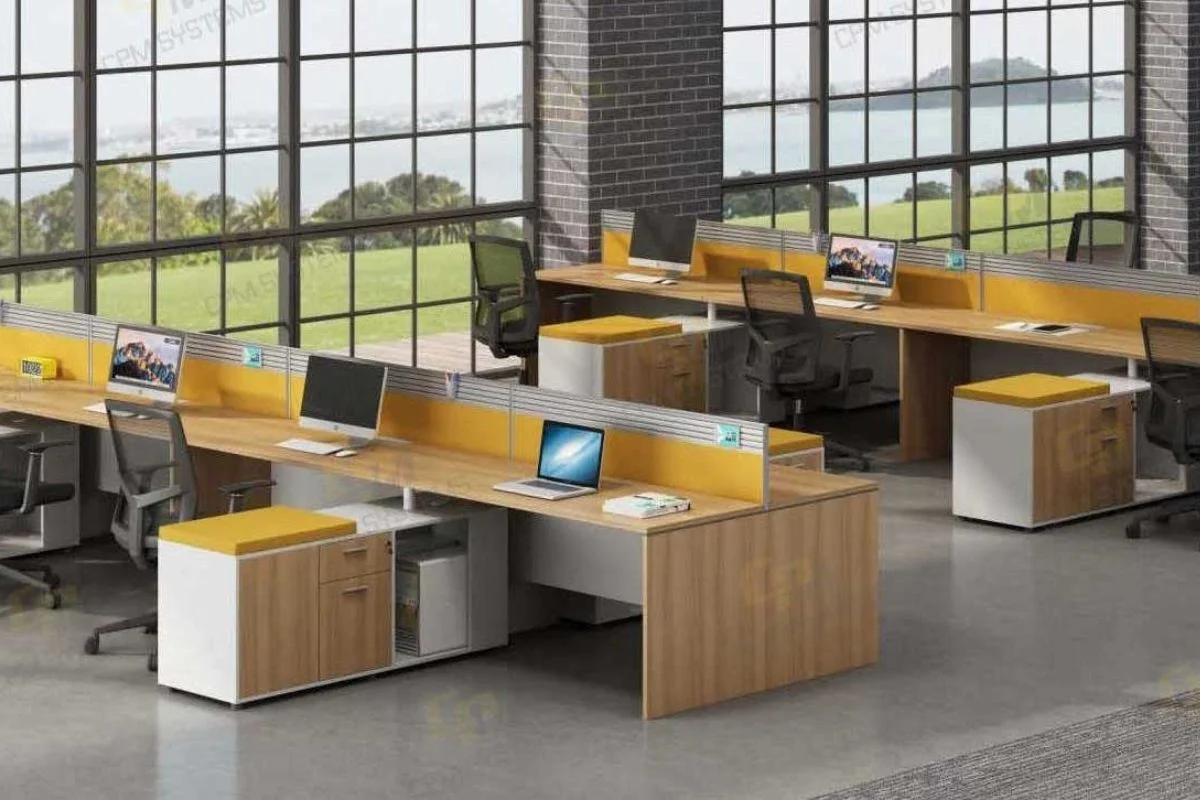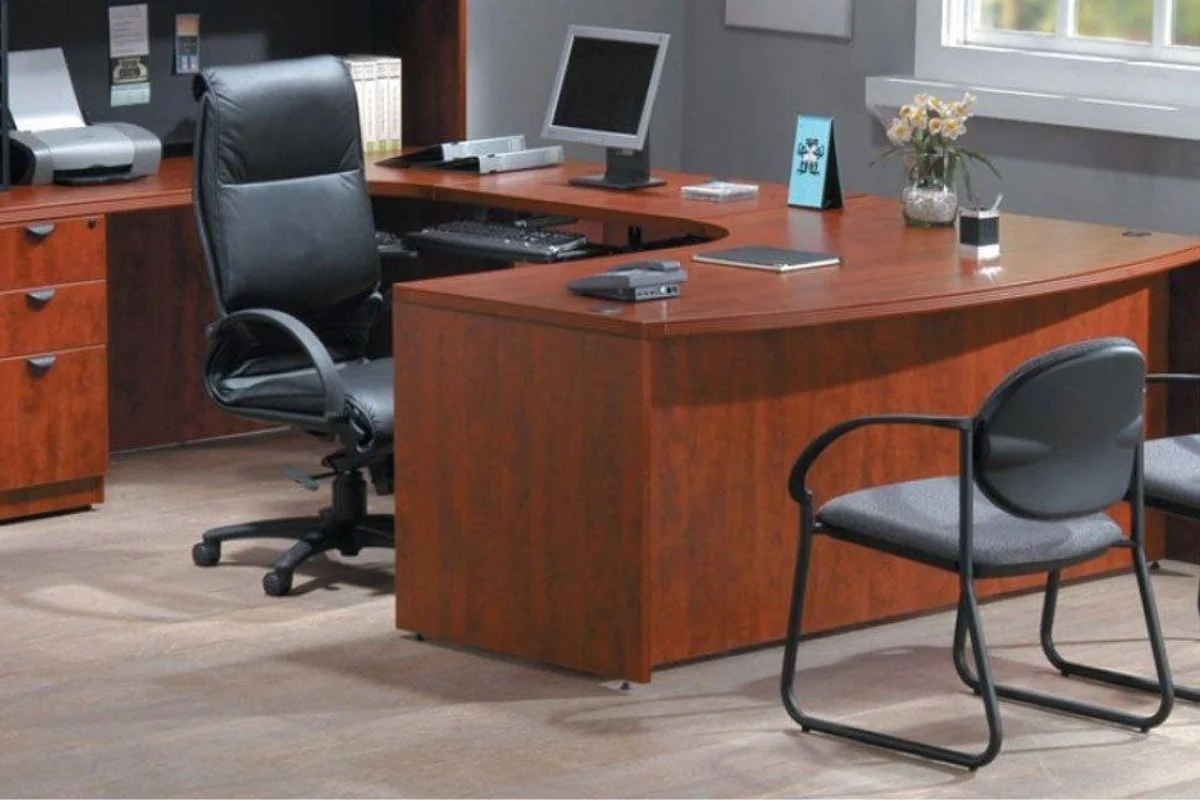In today’s fast-paced world, the workspace is more than just a place to work—it’s a reflection of our creativity, productivity, and professionalism. An inspiring workspace is essential for fostering innovation, collaboration, and success, and at the heart of any well-designed office lies the furniture that fills it.
Welcome to “Creating an Inspiring Workspace: A Guide to Office Furniture.” In this comprehensive guide, we will explore the importance of office furniture in shaping the atmosphere, functionality, and overall vibe of your workspace. From ergonomic chairs to sleek desks, from stylish storage solutions to versatile meeting tables, every piece of office furniture plays a crucial role in creating an environment where ideas flourish and productivity soars.
In the modern workplace, the design and layout of office furniture are key elements in enhancing employee well-being, engagement, and performance. Whether you’re setting up a home office, redesigning a corporate workspace, or outfitting a startup studio, the right choice of office furniture can make all the difference in creating a space where individuals thrive and teams excel.
Join us on a journey through the world of office furniture, where form meets function and style meets substance. Discover the latest trends, innovative designs, and practical considerations that will help you transform your workspace into a hub of creativity, collaboration, and inspiration.
Importance of Office Furniture in Workspace Design
Office furniture plays a pivotal role in shaping the functionality, aesthetics, and overall ambiance of a workspace. Beyond mere utility, the selection and arrangement of office furniture contribute significantly to employee comfort, productivity, and well-being. Here are several key reasons highlighting the importance of office furniture in workspace design:
Enhancing Productivity: Well-designed office furniture can significantly impact employee productivity by providing ergonomic support, facilitating efficient workflow, and minimizing distractions. Comfortable chairs, ergonomic desks, and properly positioned workstations contribute to a conducive work environment where employees can focus and perform their tasks effectively.
Promoting Collaboration and Communication: Office furniture layout and design can influence the level of interaction and collaboration among employees. Open-concept workstations, communal meeting tables, and collaborative seating arrangements encourage teamwork, idea-sharing, and spontaneous discussions, fostering a sense of community and camaraderie within the workplace.
Reflecting Organizational Culture: Office furniture serves as a reflection of an organization’s values, culture, and brand identity. The style, color scheme, and design aesthetic of office furniture contribute to creating a cohesive and visually appealing workspace that aligns with the company’s image and ethos, enhancing employee morale and pride in their workplace environment.
Supporting Employee Well-being: Ergonomic office furniture is essential for supporting employee health and well-being in the workplace. Adjustable chairs, sit-stand desks, and ergonomic accessories promote proper posture, reduce the risk of musculoskeletal injuries, and mitigate the negative effects of prolonged sitting, contributing to improved employee comfort and overall health.
Maximizing Space Utilization: Efficient use of office furniture is crucial for maximizing space utilization and optimizing the layout of the workspace. Modular furniture systems, multifunctional workstations, and space-saving storage solutions enable organizations to make the most of limited office space, accommodating diverse work styles and preferences while maintaining a clutter-free and organized environment.
Facilitating Flexibility and Adaptability: As work environments evolve and organizational needs change, office furniture should be adaptable to accommodate shifting requirements and emerging trends. Flexible furniture configurations, modular seating arrangements, and mobile workstations enable organizations to adapt quickly to changing circumstances, reconfigure spaces, and accommodate evolving work practices and technologies.
Creating a Positive Work Environment: The design and arrangement of office furniture can influence the overall atmosphere and mood of the workplace. Thoughtfully curated furniture pieces, comfortable seating areas, and inviting breakout spaces contribute to creating a positive and inspiring work environment that fosters creativity, innovation, and employee engagement.
Understanding Office Furniture Basics
Office furniture is more than just desks and chairs—it encompasses a wide range of functional and aesthetic elements that contribute to creating a productive and comfortable workspace. Understanding the basics of office furniture is essential for designing an efficient and inviting office environment. Here are some key components of office furniture that every workspace should consider:
Desks: Desks are the central workstations where employees perform their daily tasks. They come in various shapes, sizes, and configurations, including traditional rectangular desks, L-shaped desks, U-shaped desks, and standing desks. Desks may feature built-in storage compartments, cable management systems, and adjustable height options to accommodate different work preferences and requirements.
Chairs: Office chairs play a crucial role in providing ergonomic support and comfort for employees who spend extended hours seated at their desks. Ergonomic chairs typically feature adjustable height, lumbar support, armrests, and seat depth to promote proper posture and reduce the risk of musculoskeletal strain and fatigue. Task chairs, executive chairs, and ergonomic stools are common types of office chairs used in various work settings.
Storage Solutions: Effective storage solutions are essential for organizing documents, supplies, and personal belongings within the office environment. Common types of office storage furniture include filing cabinets, bookcases, shelving units, and credenzas. Storage furniture may feature locking mechanisms, adjustable shelves, and integrated file drawers to accommodate different storage needs and security requirements.
Tables: Tables serve a variety of functions within the office, including meeting, collaboration, and dining areas. Conference tables, round tables, and rectangular tables are used for hosting meetings, conferences, and collaborative discussions. Breakroom tables and café tables provide spaces for employees to gather, socialize, and enjoy meals together. Tables may feature durable surfaces, cable management options, and integrated power outlets to support various activities and technology needs.
Seating Solutions: In addition to desk chairs, office environments may incorporate a variety of seating solutions to accommodate different work settings and activities. Lounge chairs, sofas, and ottomans create comfortable and inviting lounge areas for informal meetings, casual discussions, and relaxation. Guest chairs and reception seating provide welcoming seating options for visitors, clients, and guests.
Workstations: Workstations are dedicated areas where employees perform their tasks and activities within the office. Workstations may consist of a desk, chair, storage unit, and task lighting, arranged in a compact and efficient layout to maximize space utilization and productivity. Cubicles, benching systems, and open-plan workstations are common types of office workstation configurations used in modern workplaces.
Choosing the Right Office Furniture
Selecting the right office furniture is essential for creating a functional, comfortable, and productive workspace. From desks and chairs to storage solutions and collaborative furniture, each piece plays a crucial role in shaping the overall environment and supporting employee well-being and performance. Here are some key considerations to keep in mind when choosing office furniture:
Assess Workspace Needs: Begin by assessing the specific needs and requirements of your workspace. Consider factors such as the size and layout of the office, the number of employees, and the types of tasks and activities performed. Identify areas where furniture is needed, including individual workstations, meeting rooms, reception areas, and breakrooms.
Consider Ergonomics: Prioritize ergonomics when selecting office furniture to support employee health, comfort, and productivity. Choose ergonomic chairs with adjustable height, lumbar support, and armrests to promote proper posture and reduce the risk of musculoskeletal strain. Opt for desks with adjustable height options to accommodate different work preferences, including sitting and standing positions.
Evaluate Quality and Durability: Invest in high-quality office furniture that is built to last and withstand daily wear and tear. Look for furniture pieces made from durable materials such as solid wood, metal, or high-quality laminate. Consider factors such as weight capacity, construction quality, and warranty coverage when evaluating the durability of office furniture.
Balance Aesthetics with Functionality: Strike a balance between aesthetics and functionality when choosing office furniture. Select furniture pieces that complement the overall design aesthetic and branding of the workspace while meeting practical needs and requirements. Consider factors such as color, style, and finish to create a cohesive and visually appealing environment.
Prioritize Flexibility and Adaptability: Choose office furniture that offers flexibility and adaptability to accommodate changing needs and preferences. Opt for modular furniture systems, adjustable workstations, and versatile seating options that can be easily reconfigured and repurposed as the workspace evolves. Prioritize furniture pieces that can adapt to diverse work styles and accommodate technological advancements.
Consider Budget Constraints: Establish a budget for office furniture and prioritize spending on essential pieces that align with the needs and priorities of the organization. Consider the long-term value and return on investment when evaluating furniture options, taking into account factors such as durability, functionality, and employee satisfaction. Explore cost-effective solutions such as refurbished furniture, bulk discounts, and leasing options to maximize budget efficiency.
Test Furniture for Comfort and Functionality: Whenever possible, test office furniture in person to assess comfort, functionality, and quality before making a purchase. Encourage employees to participate in the selection process and provide feedback on furniture options to ensure that their needs and preferences are taken into consideration.
Consider Sustainability and Environmental Impact: Choose office furniture from manufacturers and suppliers committed to sustainability and environmental responsibility. Look for furniture pieces made from recycled materials, certified sustainable wood, and low-emission finishes to minimize the environmental impact of your workspace. Consider factors such as product lifecycle, energy efficiency, and recyclability when evaluating the sustainability of office furniture options.
Exploring Different Types of Office Furniture
Office furniture encompasses a diverse array of furnishings designed to support various functions and activities within the workspace. From workstations to meeting areas, each type of furniture serves a specific purpose and contributes to the overall functionality and aesthetic appeal of the office environment. Let’s explore some of the different types of office furniture commonly found in modern workplaces:
Desks: Desks are essential workstations where employees perform their daily tasks, organize documents, and collaborate with colleagues. They come in various shapes and sizes, including traditional rectangular desks, L-shaped desks, U-shaped desks, and standing desks. Desks may feature built-in storage compartments, cable management systems, and adjustable height options to accommodate different work preferences and requirements.
Chairs: Office chairs play a critical role in providing ergonomic support and comfort for employees who spend extended hours seated at their desks. Ergonomic chairs typically feature adjustable height, lumbar support, armrests, and seat depth to promote proper posture and reduce the risk of musculoskeletal strain and fatigue. Task chairs, executive chairs, and ergonomic stools are common types of office chairs used in various work settings.
Storage Solutions: Effective storage solutions are essential for organizing documents, supplies, and personal belongings within the office environment. Common types of office storage furniture include filing cabinets, bookcases, shelving units, and credenzas. Storage furniture may feature locking mechanisms, adjustable shelves, and integrated file drawers to accommodate different storage needs and security requirements.
Tables: Tables serve a variety of functions within the office, including meeting, collaboration, and dining areas. Conference tables, round tables, and rectangular tables are used for hosting meetings, conferences, and collaborative discussions. Breakroom tables and café tables provide spaces for employees to gather, socialize, and enjoy meals together. Tables may feature durable surfaces, cable management options, and integrated power outlets to support various activities and technology needs.
Seating Solutions: In addition to desk chairs, office environments may incorporate a variety of seating solutions to accommodate different work settings and activities. Lounge chairs, sofas, and ottomans create comfortable and inviting lounge areas for informal meetings, casual discussions, and relaxation. Guest chairs and reception seating provide welcoming seating options for visitors, clients, and guests.
Workstations: Workstations are dedicated areas where employees perform their tasks and activities within the office. Workstations may consist of a desk, chair, storage unit, and task lighting, arranged in a compact and efficient layout to maximize space utilization and productivity. Cubicles, benching systems, and open-plan workstations are common types of office workstation configurations used in modern workplaces.
Maintenance and Care Tips for Office Furniture
Proper maintenance and care of office furniture are essential for preserving its appearance, functionality, and longevity. By following these maintenance and care tips, organizations can ensure that their office furniture remains in top condition for years to come:
Regular Cleaning: Establish a routine for regular cleaning of office furniture surfaces using a soft, damp cloth or microfiber cloth. Wipe down desks, tables, chairs, and storage units to remove dust, dirt, and debris that can accumulate over time.
Use Appropriate Cleaning Products: Use mild, non-abrasive cleaning products suitable for the materials of your office furniture. Avoid harsh chemicals and abrasive cleaners that can damage finishes and surfaces. Always follow manufacturer recommendations for cleaning and care.
Protect Surfaces from Spills and Stains: Encourage employees to use coasters, placemats, and desk pads to protect furniture surfaces from spills, stains, and scratches. Promptly clean up spills and stains using a mild detergent and water to prevent them from setting and causing permanent damage.
Avoid Excessive Weight and Pressure: Avoid placing heavy objects or excessive weight on office furniture surfaces, shelves, and drawers. Distribute weight evenly and use furniture for its intended purpose to prevent warping, bending, or structural damage over time.
Adjust and Tighten Hardware: Periodically check and tighten hardware such as screws, bolts, and hinges on office furniture pieces to ensure stability and structural integrity. Loose or missing hardware can compromise the functionality and safety of furniture items.
Protect Upholstery and Fabric: For upholstered office furniture such as chairs and sofas, vacuum regularly to remove dust and debris. Spot clean stains and spills promptly using a mild detergent and water, and consider using a fabric protector to repel stains and extend the life of upholstery.
Control Sunlight Exposure: Position office furniture away from direct sunlight and heat sources to prevent fading, discoloration, and damage to finishes and upholstery fabrics. Use blinds, curtains, or UV-filtering window film to control sunlight exposure and protect furniture from harmful UV rays.
Rotate and Rearrange Furniture: Periodically rotate and rearrange office furniture to distribute wear and tear evenly and prevent excessive use of specific pieces. Consider reconfiguring furniture layouts to accommodate changing work needs and promote a fresh and dynamic workspace environment.
Implement Preventive Maintenance Measures: Implement preventive maintenance measures such as lubricating moving parts, replacing worn-out components, and repairing minor damage promptly to prevent larger issues from developing. Schedule regular inspections and maintenance checks to identify and address potential issues early on.
Consult Manufacturer Guidelines: Refer to manufacturer guidelines and recommendations for specific maintenance and care instructions for your office furniture. Manufacturers may provide guidance on cleaning products, maintenance schedules, and warranty coverage to help you keep your furniture in optimal condition.
Conclusion
In conclusion, proper maintenance and care of office furniture are crucial aspects of creating a functional, comfortable, and aesthetically pleasing workspace environment. By following the maintenance and care tips outlined in this guide, organizations can prolong the lifespan of their office furniture, preserve its appearance and functionality, and ensure a clean and inviting atmosphere for employees.
